Scuba Conversational - Episode #69: Moving Waves & Ocean Encounters
It’s dawn off southwest Papua, the fishing platform is covered in seabirds, and the divers are geared up, ready to discover what lies beneath…
Thank you for your patience.
Scuba Conversational #69 has been a while in the making.
Since the last episode, we have:
Spent several weeks sailing/steaming/cruising/diving up and down the southwest coast of Indonesian West Papua between Sorong in the north and Aiduma Island in the south, accompanied by a rotating cast of friends from all over the world, covering several hundred miles of remote ocean, visiting familiar places as well as brand new destinations.
AND…
Moved house from a village in the deep south of Taiwan to a tiny Hong Kong island called Peng Chau, which has no cars and no motorbikes and lies only a 30-minute ferry ride from the city centre.
Now here we are, slowly settling into our new home - the first time we haven’t been “temporary” for a few years, and I have a little writing time.
This episode of Scuba Conversational is dedicated to our recent adventures, beginning with a few pictures from our move from one country to another - neither of which is officially a country (but that’s a-whole-nother story).
From Baoli, Taiwan to Peng Chau, Hong Kong

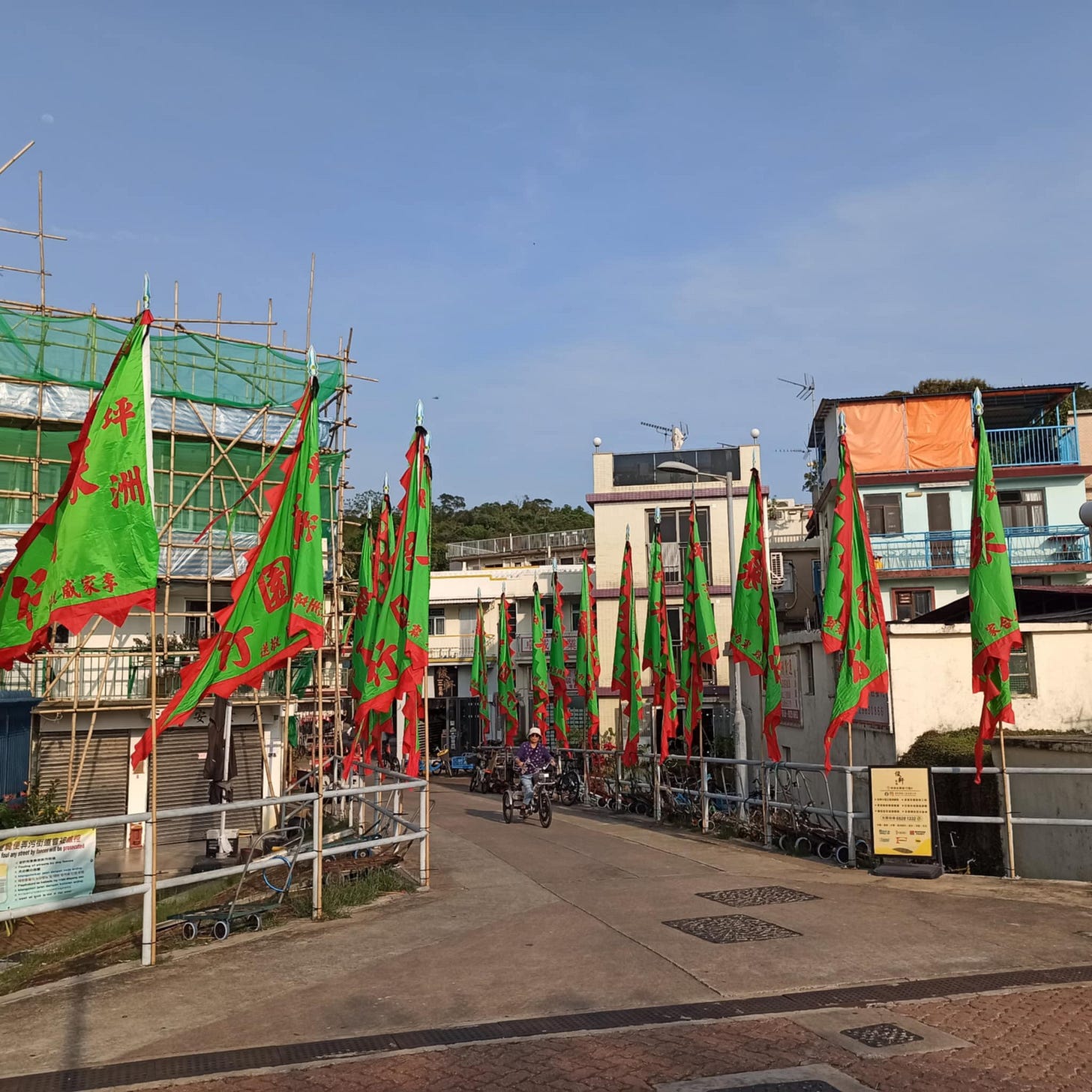
West Papua Odyssey
In February and March 2025, we followed more or less the route shown on the two maps below.
The first shows where the part of West Papua we were travelling through lies in the context of Southeast Asia, and you can see why it is often referred to as the Birdshead Peninsula. Look at the picture and imagine the whole of the island of Papua as a large west-facing bird.
The second map is the area in close-up, although the scale is still a little too large. Utarom is the airport that serves Kaimana and the surrounding region, and the spot where the red lines join at the bottom of the map is the approximate location of Triton Bay Divers in the Iris Straits beneath the confluence of three rivers - hence Triton.
Misool and its eponymous resort are the hub of South Raja Ampat, where we spent much of our time, and Sorong was both the start and end point of our odyssey.
We travelled aboard the Pindito liveaboard dive vessel for a little over three weeks of the journey, and spent the rest of the time at Triton Bay Divers resort on Aiduma.
The Birdshead Seascape
The https://birdsheadseascape.com/ website covers this astonishing region in great detail and it’s a terrific resource if you are planning to travel and dive there.
And photographer Don Silcock has an excellent article on his indopacificimages website called Understanding the Birdshead Seascape. Just click on the image below. It’s an excellent read, and his pictures are superb.
The overriding aim of our trips was to get some great diving in, and we were enormously successful. One of the divers on board the second Pindito trip, who had 3000-plus lifetime dives, told us she had had one of the ten best dives of her life on dive one of day one.
Then two days later, she announced she had just experienced…
“…hands down the best dive of my life”
I know she had 3000-plus dives because she told me. In fact, when I put the question to her, she thought for a moment and then said confidently…
“3043”
I asked how she could be so exact, and she told me that, since she began diving, she had owned four dive computers. When the log on her first computer reached 999 dives, it wouldn’t count them any more, so she bought a new one, - the same model. When the dive log on this computer reached 999, she bought a third, and then, when that one was at 999, she bought a fourth. This was the computer she was using now, and her last dive was dive number 46.
That’s why she had to do a little mental arithmetic before answering.
I was astonished. In all my time in the diving world, I’d never heard of anybody doing that. Have you? I’d be interested if you have a similar story. Please email me. It would make a fun article.
After one dive, an Australian lady came up the boat ladder from a Triton Bay site called Tim’s Rock and made a beeline for me as I was sitting on the dive deck, taking my boots off.
I saw her coming and, having just emerged from the water a few minutes earlier, I had a good idea of what could be on her mind. That action at Tim’s Rock that afternoon was off-the-scale phenomenal - it had been cranked all the way up to 11 - and I guessed that the adrenalin might still be coursing through her veins.
As she approached, I looked up and asked innocently
“Good dive?”
She just stared at me, blinking and shaking her head as if trying to dislodge the appropriate words. But nothing was coming out, and finally, she just gasped in frustration and exclaimed.
Bloody Hell!
Then turned and walked away, still shaking her head.
These two short videos (thanks, Jack) give you an idea of the experience that had left her speechless. Just imagine floating in the fish mass for an hour as it seethes and curls and folds and unfolds around you, ignoring you completely, not shying away from your bubbles and treating you as just part, albeit a pretty strange looking part, of their environment.
Here’s another one:
And this is a brief Tim’s Rock clip from Sofie, shot with her hand-held Sealife Micro 3.0 camera - a profusion of life!
Tim’s Rock, by the way, is named after Tim Rock - my sometime co-author and our (almost) ever-present trip co-organiser - who, like us, was an early diving visitor to the Triton Bay area. The boat he was on named this new dive site after him - he has a perfect name for dive site identification after all (although Rock Rock doesn’t sound great).
Then we started planning to write a guidebook to the region, but this took us the best part of 7 years to research and, by the time we published - see the link at the end of this newsletter - someone else had published their own guide and they named the site Christmas Rock after the day they dived it.
So, it has two names. The good folks at local dive operation Triton Bay Divers tell us they call it Christmas Rock on Christmas Day and Tim’s Rock on other days, but I have a feeling they just say that to please us.
Which is very nice of them. And they have a very nice dive resort.
Not all of us were watching the fish schools on that perfect day at Tim’s Rock, however. As I emerged and stepped up into the tender, I found our old pal Bruce was already there.
Now, I have dived with Bruce many times over many years, and he NEVER ends a dive before I do.
This time he had. I pulled my mask down around my neck, wiped an hour’s accumulation of snot off my face and flicked it into the sea, then asked him -
What’s up?
Incredible dive!
I know. Massive schools of fish everywhere.
Didn’t notice.
Bruce smiled. He had certainly noticed. You couldn’t miss them. But he evidently had a point to make.
I stared at him.
OK, out with it
Rekel found a blue ring octopus…
Fantastic!
I slapped dive guide Rekkel on the back.
Great job, man!
But Bruce hadn’t finished his sentence.
…giving birth!
WHAAAAAAAATTTTTT!!!
Yes, as Bruce watched, with his camera clicking away, the blue ring octopus Rekel had found began releasing tiny babies as they emerged from the clutch of eggs she had been clinging to, and, one by one, they floated away from her arms into the arms of the sea.
What an astonishing once-in-a-lifetime experience. Maybe, he’ll share an image or two after Alert Diver Magazine has chosen the best ones. (Look out for that edition of the magazine coming soon.)
If so, I’ll include images in a future edition of Scuba Conversational.
Here’s what Wiki says about blue-ring octopus baby-making.
Shortly after mating, the female lays 50 to 100 eggs. Only one clutch per lifetime. She broods the eggs under her mantle in a cluster on her arms, during which time, she does not eat. After the eggs hatch, the female dies, and the new offspring will reach maturity and be able to mate by the following year.
Bruce and Rekel were the only ones who got to see this event live and as it happened, but over the two months, every diver in our group had unforgettable moments that we will never forget, including…
This clip, again by Sofie, was shot on Magic Mountain - a seamount south of Misool, which we dived on the way south, while a strong current was sweeping across it, presenting us with challenging conditions. When we returned on our way back north, the water was calmer, the movement gentle, visibility was phenomenal, and we could cover the entire site.
Sofie and I swam along the deep ridge and were lucky to come across a manta ray circling over a cleaning station. Watch the clip above with the sound on and you can share the moment, breathing along with Sofie as the manta comes ever closer - you don't want to spook it - and...exhale....then inhale....now hold...hold...hold...hold...and exhale once it has passed...
…then inhale again...
Completely unforgettable.
While the manta was circling gracefully, there were also giant trevallies coursing around us, as you can see in the following clip. This was shot in real time. They really do move this fast!
Further south, outside Kaimana town, there were also giant trevallies under one of the night fishing platforms we visited one morning. This was another experience that left us stunned. We have seen giant trevallies many times before, but mostly individuals on lone patrol or a small group hunting together as a pack, like the ones that were tearing past the manta ray at Magic Mountain as it was being cleaned.
But we have never seen a school of well over a hundred giant trevallies as we did here. The murkiness of the water obscures the view a little, but it gives you a good idea of how big the school was and, at the end of this short clip, you may notice that other animals were schooling in this particular patch of ocean.
The previous week, we had seen a big school of tuna in the same place. This time we not only had a mass of jacks, but we had dolphins too.
Here’s a mother and her baby, hoovering up the fish scraps from the fishermen’s nets, more about which below.
They were just two of a whole host of dolphins playing around us, as you can see below.
Incredible as it may seem, we hadn’t initially gone diving here to see the jacks, nor the tuna, nor even the dolphins. The main draw was the chance of spending time with much bigger animals.
In various locations all across Indonesia, fishermen go out at night on narrow fishing canoes with platforms mounted to them. Once in place, they extend the platforms, which have large nets hanging beneath them and, after it gets dark, the fishermen switch on powerful lights mounted on the platform and direct their beams into the ocean below.
The illumination acts as a magnet for schools of small fish, which swim into the nets. In the morning, the fishermen will scoop up the nets and carry their catch back to Kaimana and sell the fish in the market.
On good nights, the volume of fish trapped in the nets is so great that the fish are crushed, and fish oil oozes into the water. This attracts juvenile whale sharks - juvenile but still 6m to 7m (around 20ft) long - which suck on the nets in the same way that you would slurp a slurpee.
The appearance of the whale sharks coincides with a good night’s fishing, so the fishermen believe the whale sharks bring them luck, and they like to keep them around by throwing some of their catch into the water for them. This activity in turn attracts other hungry marine life and - if we also get lucky - and manage to find a bagan at dawn that still has whale sharks around it, we pay the fishermen to stick around for a couple of hours instead of going home to sleep, and we get to have some of the best diving we have ever had.
Also, once in a while, we will get a rare and unexpected visitor such as this sailfish.
This manta/trevally/dolphin/whale shark/sailfish footage is not professional quality, nor was it shot using an expensive high-powered camera, but it does a fine job of showing people what you have seen on your dives.
When choosing a camera, Sofie didn’t want one that she would have to carry around, nor did she want to be spending her dive peering through a viewfinder. She just wanted a camera that she could keep in a pocket on her harness and deploy when she spotted a fish she might want to identify later, or when, as on these dives, she found herself in extraordinary circumstances.
Last year, we were diving with our friend Kim and she showed us the camera that she had just started using, and Sofie thought it seemed to be exactly what she had been searching for.
This is it.
And this is what the makers say about it.
The SeaLife Micro 3.0 Camera is the latest and third generation of the popular permanently-sealed Micro camera series. The camera is leak-proof with no O-rings to lube or maintain, so there is never a worry about flooding the camera. Like its forerunners, the Micro 3.0 features an ergonomic, compact design with easy-to-use controls and menus. The Micro 3.0 camera offers impressive still images with its large SONY® 16mp CMOS sensor, and vibrant 4K Ultra HD video. You can even shoot 8mp stills while you’re recording video. Since it’s permanently sealed, the Micro 3.0 has a large 3-plus hour battery good for a full day of diving and built-in 64GB of memory to store thousands of photos and hours of video.
You can find out more on their website here.
https://www.sealife-cameras.com/product/micro-3-0-underwater-camera/
We don’t have any commercial connection with Sealife, but I thought I would plug the camera here because it’s a unique product, it works well, Sofie is thrilled with it and I thought some of you non-photographers might be interested.
Sofie doesn’t use the video lights the company makes for it, mainly because then she wouldn’t just be able to tuck it away in her pocket when she is not using it, but this is what the Micro 3.0 looks like in action with the video lights attached.
Diving is all about people
We had other aims with these trips, and we more than accomplished these, too.
We wanted to spend quality time with friends we have known for many years, but see all too rarely, and meet friends of friends whom we’ve not previously had the chance to get together with.
Before COVID, we took reunions and transcontinental interactions for granted, but the enforced hiatus was a powerful reminder of how valuable time spent with distant friends is, how much you miss it when it is taken away and how necessary it is to create these moments whenever you can.
During these trips, in particular, we succeeded admirably in
Introducing people from different parts of our lives and places on the planet to each other…
Attempting to solve the problems of the world…
Deciding eventually that the problems of the world were not soluble, at least not by a bunch of diving people, and therefore…
Ignoring the problems of the world and going diving instead.
On the final day of the odyssey, after the final dive and as the gear was drying in the sun, Sofie and I popped into the water for a quick snorkel around at Triton Bay Divers. Here are a few pictures of the beach at Triton Bay Divers - taken at various times of the day - to set the scene and lead up to a few short videos showing you what we found that afternoon, not more than 10m (30ft) or so from the beach.
And a little bit deeper, there were fusiliers casually cruising around.
The schools were there for at least a couple of hours. They were having such fun - and we were having such fun - it felt rude to leave, so we didn’t. Eventually, someone called us in for afternoon tea and snacks, and we bade them farewell. It was hard to go.
Flotsam and The Divemaster Ricky Mysteries
I love the connections that people made on our trips. Mostly, these involve striking up friendships, uncovering shared interests and forging bonds. But in one case, the connection (for now) was more remote.
Tracy Grogan and Dana Muir are friends from Michigan, and Tracy is the author of the Divemaster Ricky series of thrillers. They joined us for the first of our series of trips on the Pindito liveaboard but, on the second Pindito trip, a couple of weeks later, I came out onto the upper deck and encountered Gretchen - a friend from Guam/Hawaii - reading on a couch in the shade and what did she have perched on her lap but a copy of Tracy’s first book in the series, Flotsam.
I asked Gretchen if I could interrupt her because I wanted to share the coincidence with her, but she waved me away, saying that Ricky was being chased by bad guys and she wanted to find out how she managed to escape.
There are now four books in the series. Ricky gets chased by bad guys a lot.
But I like the idea that - as they now have Ricky as a mutual friend - Tracy and Dana and Gretchen and her husband Bruce might meet and bond on one of our future dive trips.
Check the books out here.
The Divemaster Ricky Mysteries on Amazon.
Birdwatching in Sorong
Our only regret was that, despite passing through the West Papuan town of Sorong three times, we didn’t include Charles Roring’s tours in our itinerary this time.
In the past, we have done birdwatching hikes and river walks with Charles and have some wonderful memories of watching birds of paradise and bower birds among others, as well as bumping into travelling tribespeople and spending time in remote parts of the region.
Here’s an example on YouTube of the wonders Charles has shown us over the years.
Have a look at Charles’ webpage here.
Paradise Bird Watching and Wildlife Tour
As you can see, with him guiding you, Sorong is much more than just a sleepy port town.
As well as birds of paradise and hornbills, here are a few of the birds you might spot on a day trip out of Sorong.
Sulphur-crested Cockatoo, Palm Cockatoo, Eclectus Parrot, Orange-bellied Fruit Dove, Pink-spotted Fruit Dove, Pinon Imperial Pigeon, Beautiful Fruit Dove, Rufous-bellied Kookaburra, Yellow-billed Kingfisher, Helmeted Friarbird, Blyth's Hornbill, Brown Oriole, Sahul Sunbird, Black Sunbird, Pacific Baza, Gray-headed Goshawk, Brahminy Kite, Long-tailed Honeybuzzard, Yellow-faced Myna, Golden Myna.
A couple of the stories of our adventures with Charles are included in our book on diving and snorkeling in Raja Ampat and Northeast Indonesia. This is the guide I mentioned earlier, which includes Tim’s Rock in the Triton Bay section.
Diving & Snorkeling Guide to Raja Ampat & Northeast Indonesia on Amazon
A while ago, we wrote a short piece for EZDIVE magazine about how the book came to be. As I said earlier, it took us many years. But we had a lot of fun.
Until the next time
That’s all for this issue of Scuba Conversational. I hope you enjoyed it.
See you again soon in Scuba Conversational Issue #70.
Safe diving!

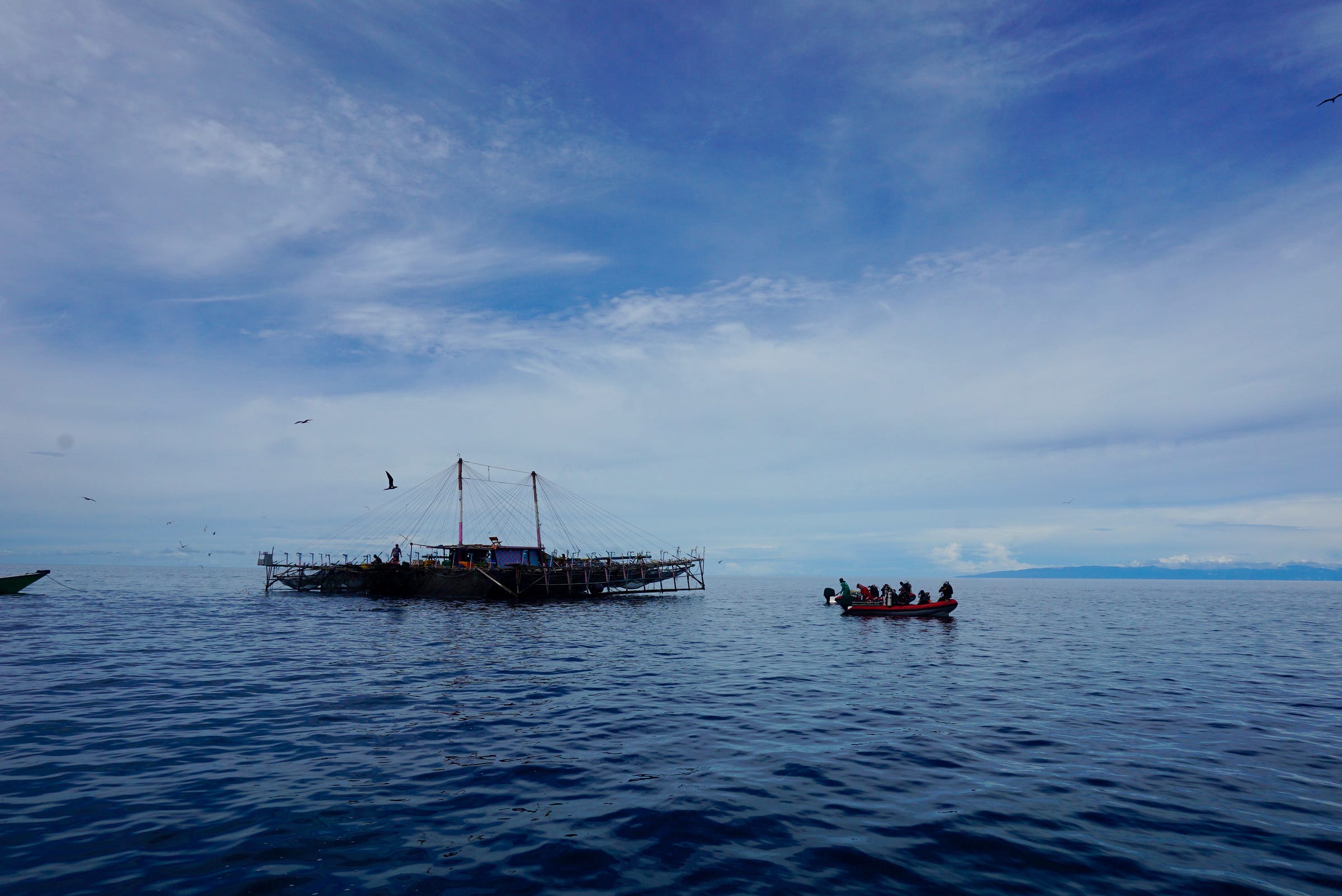

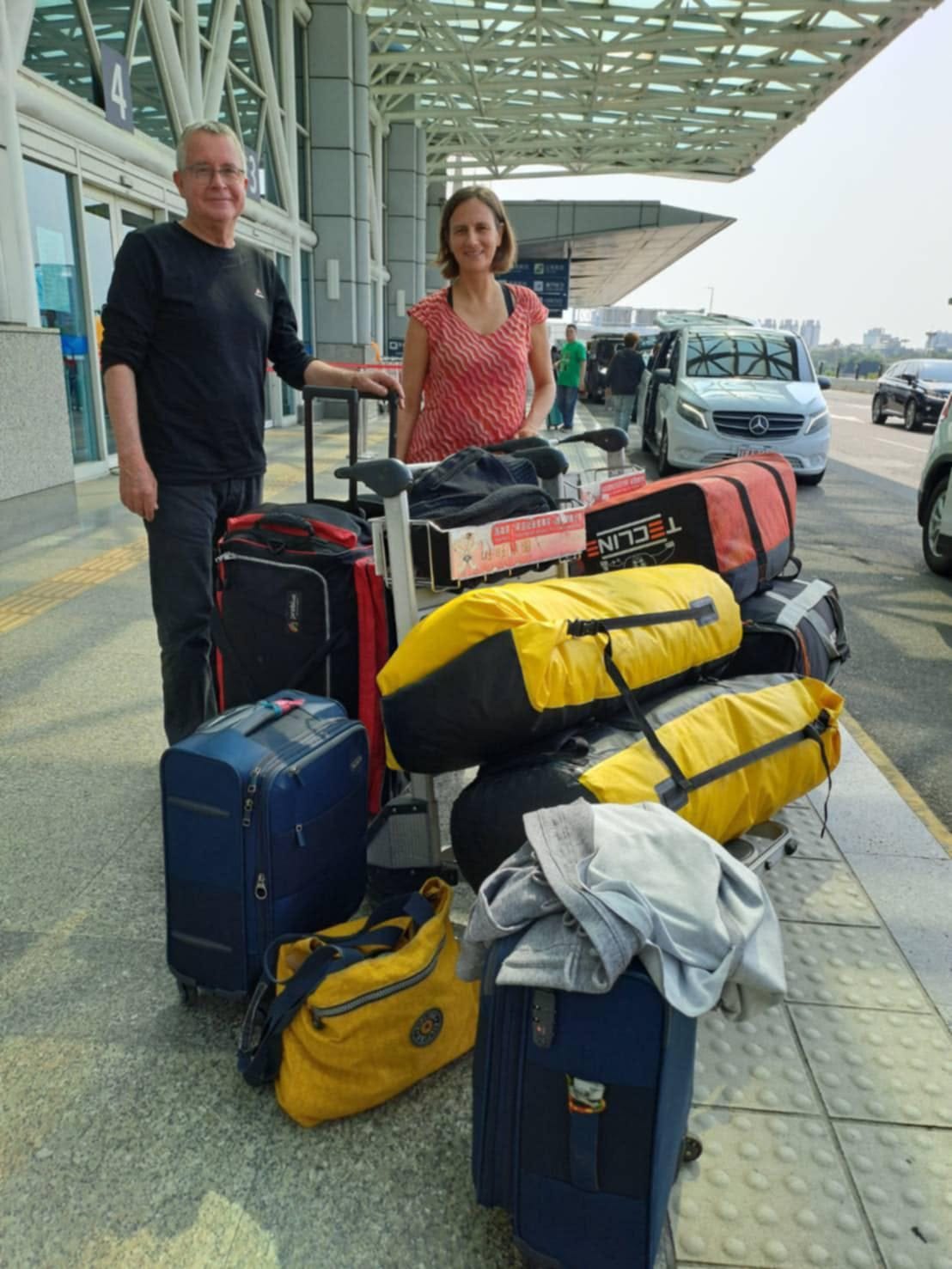

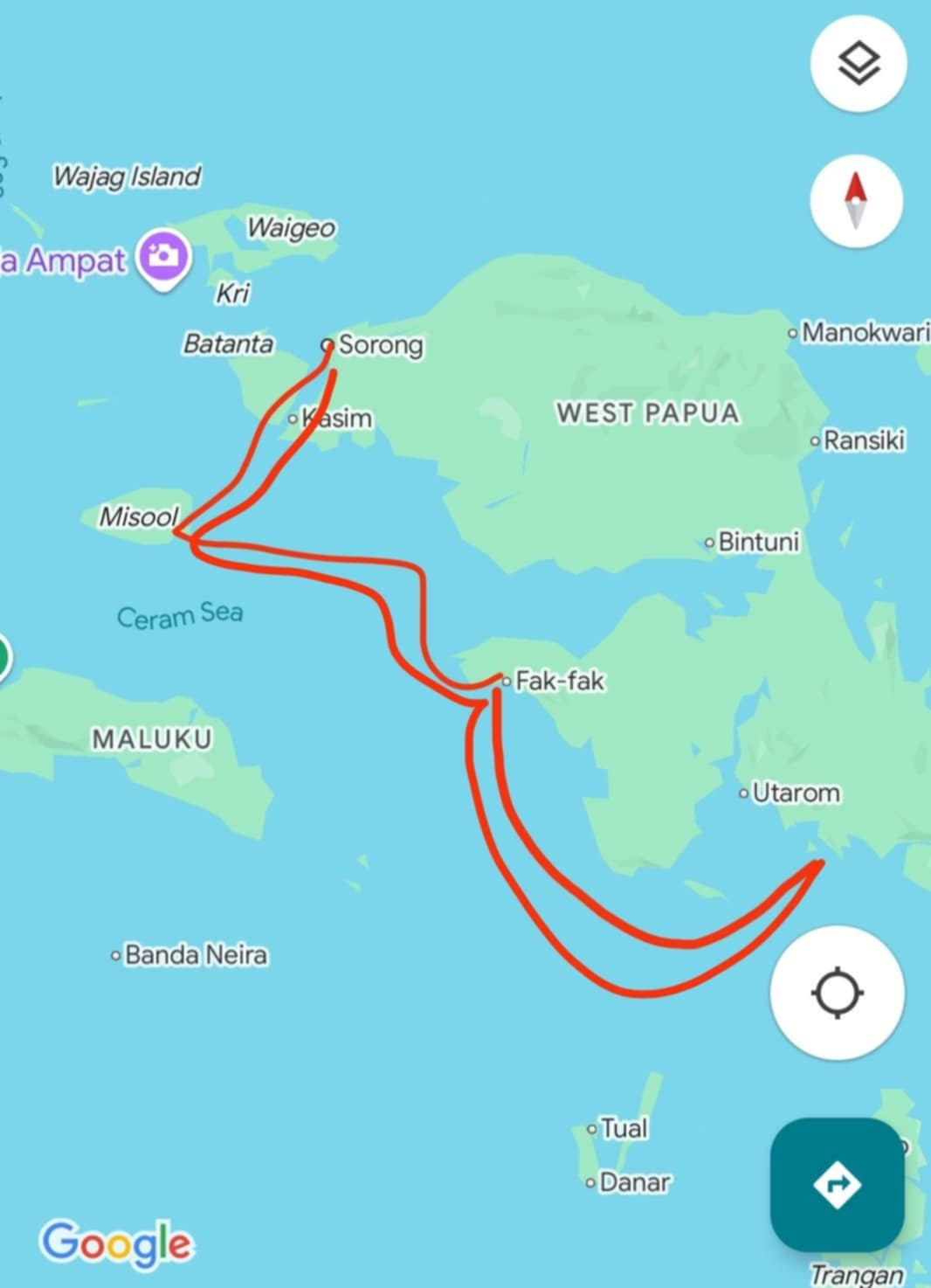
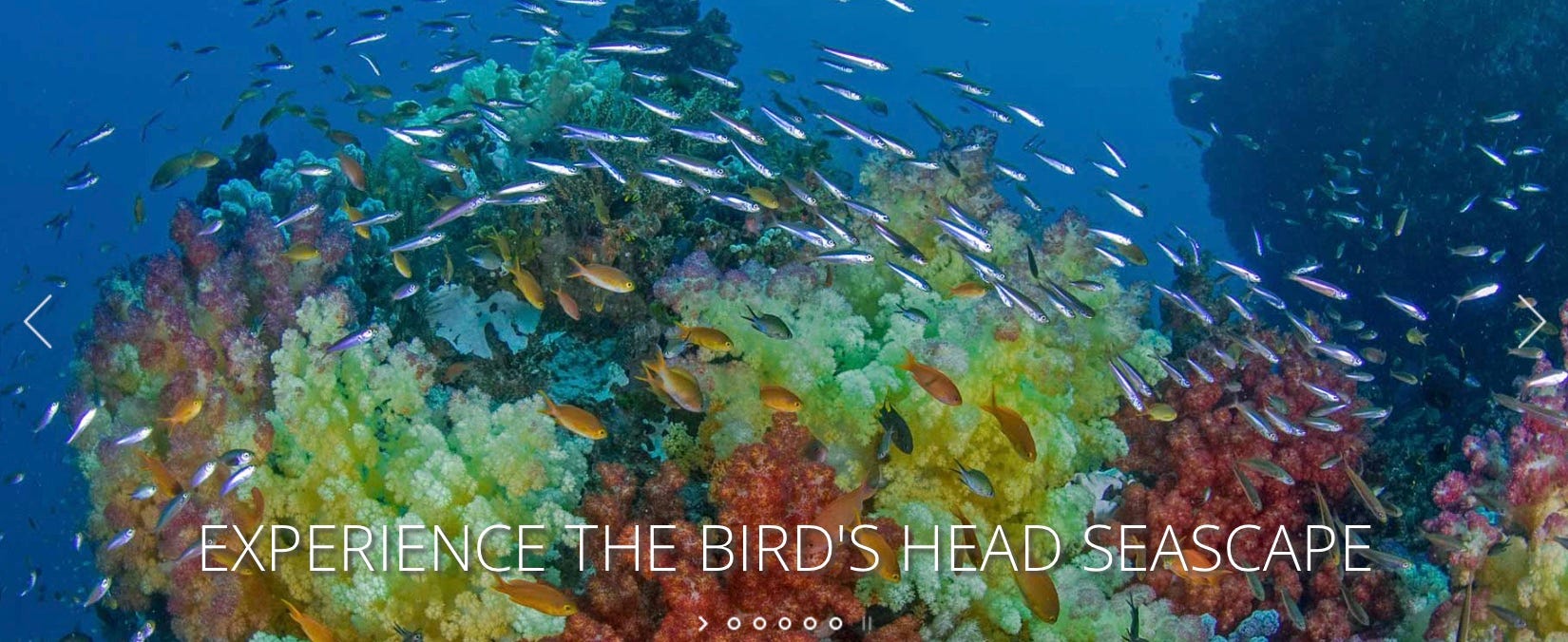

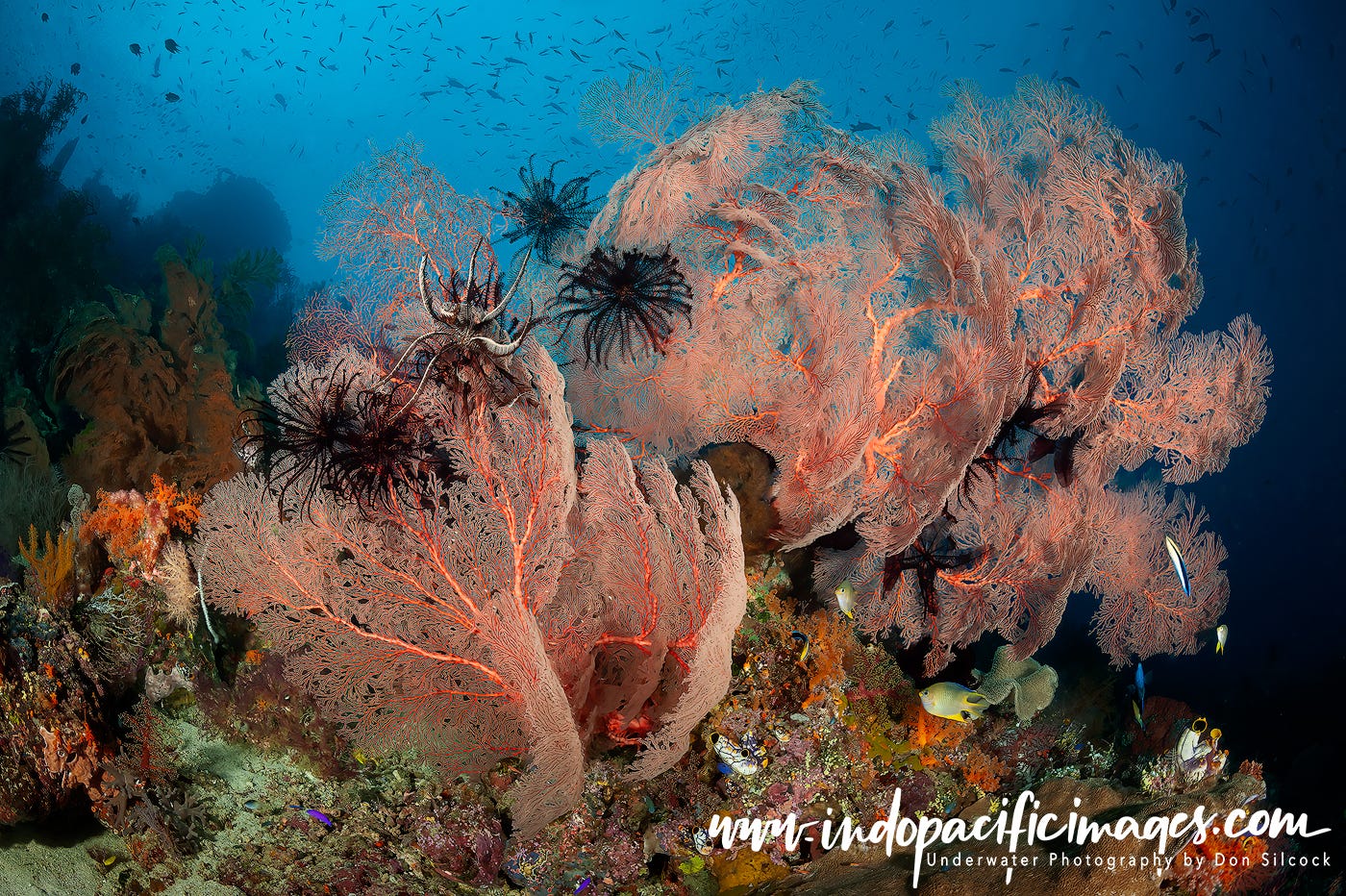




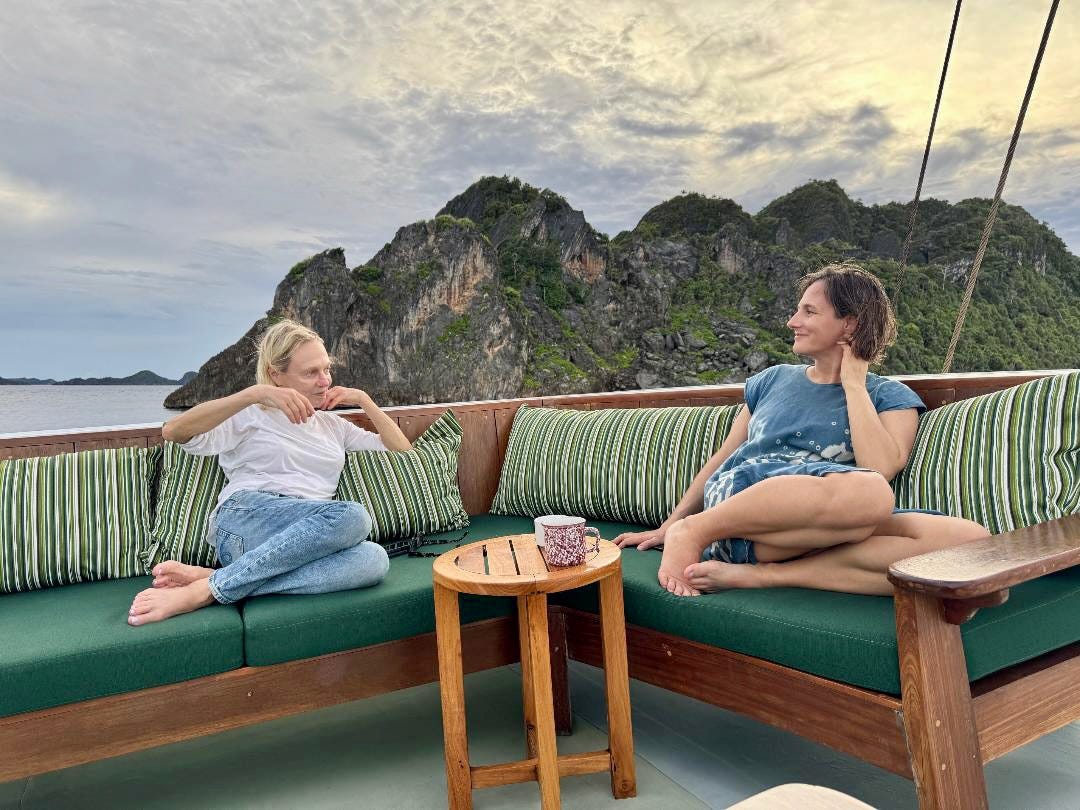

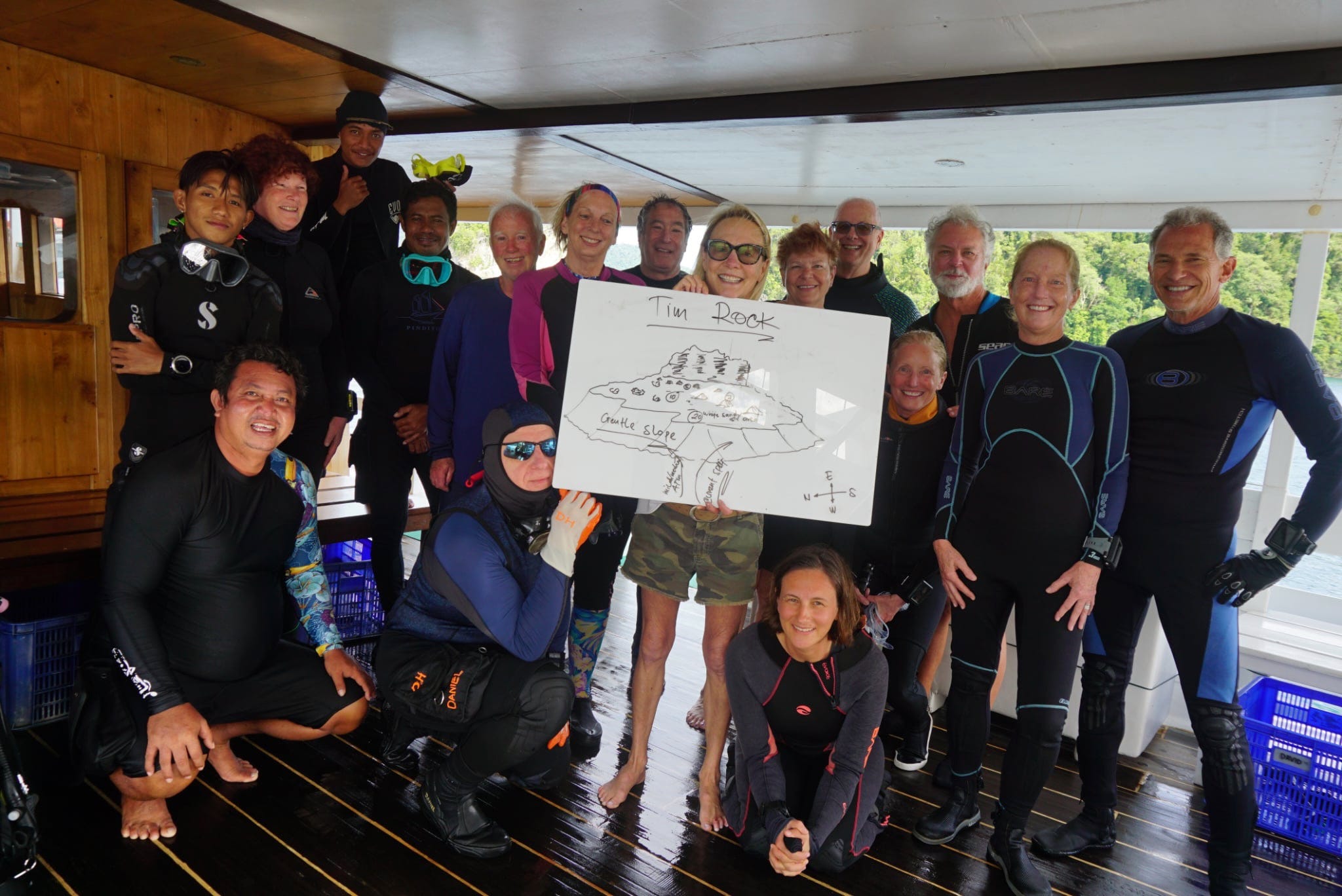
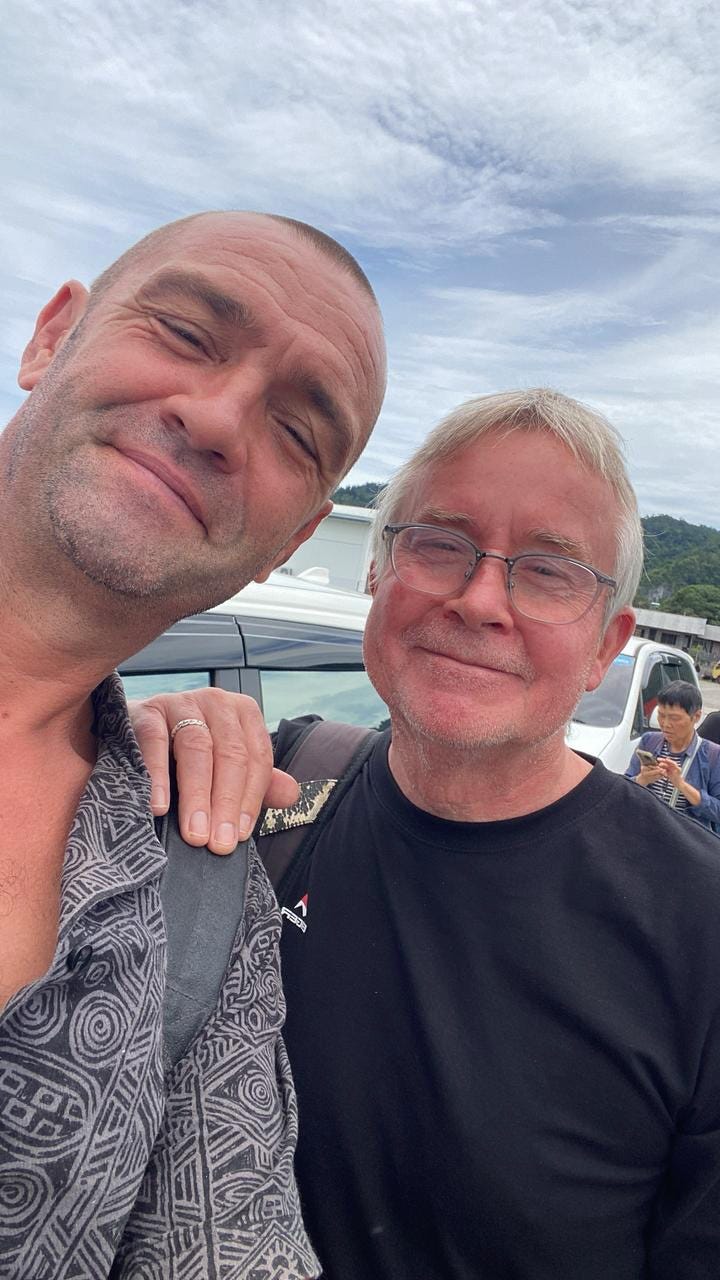

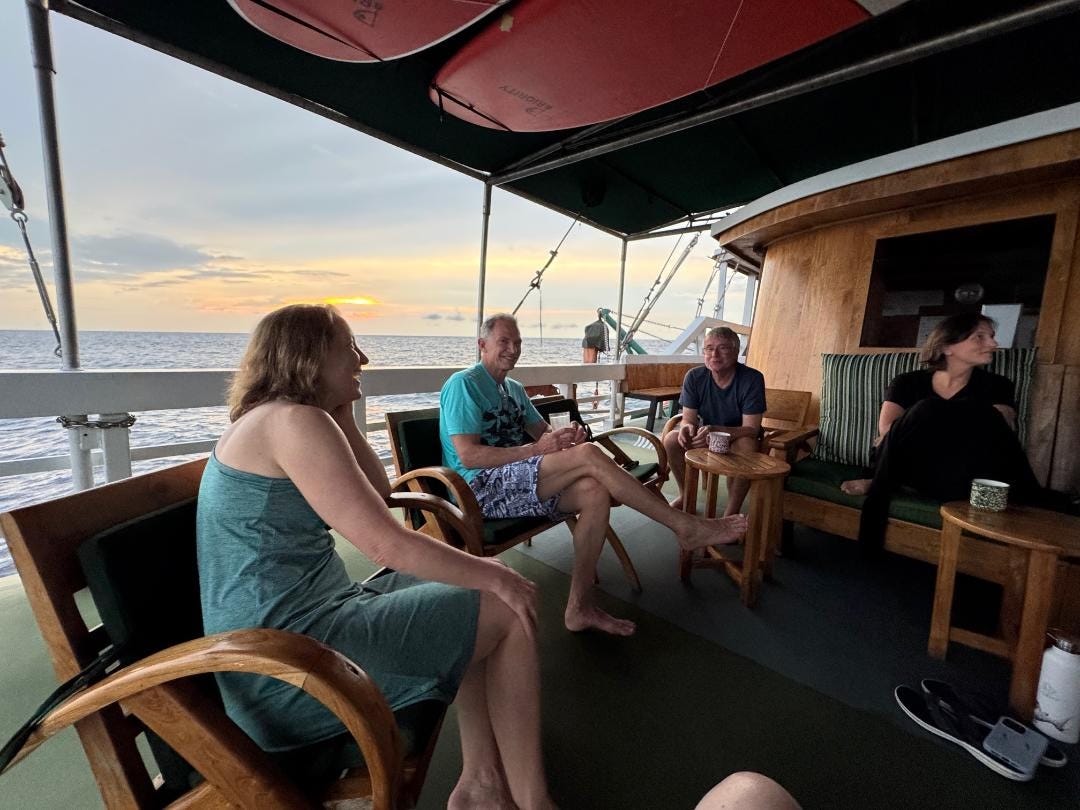
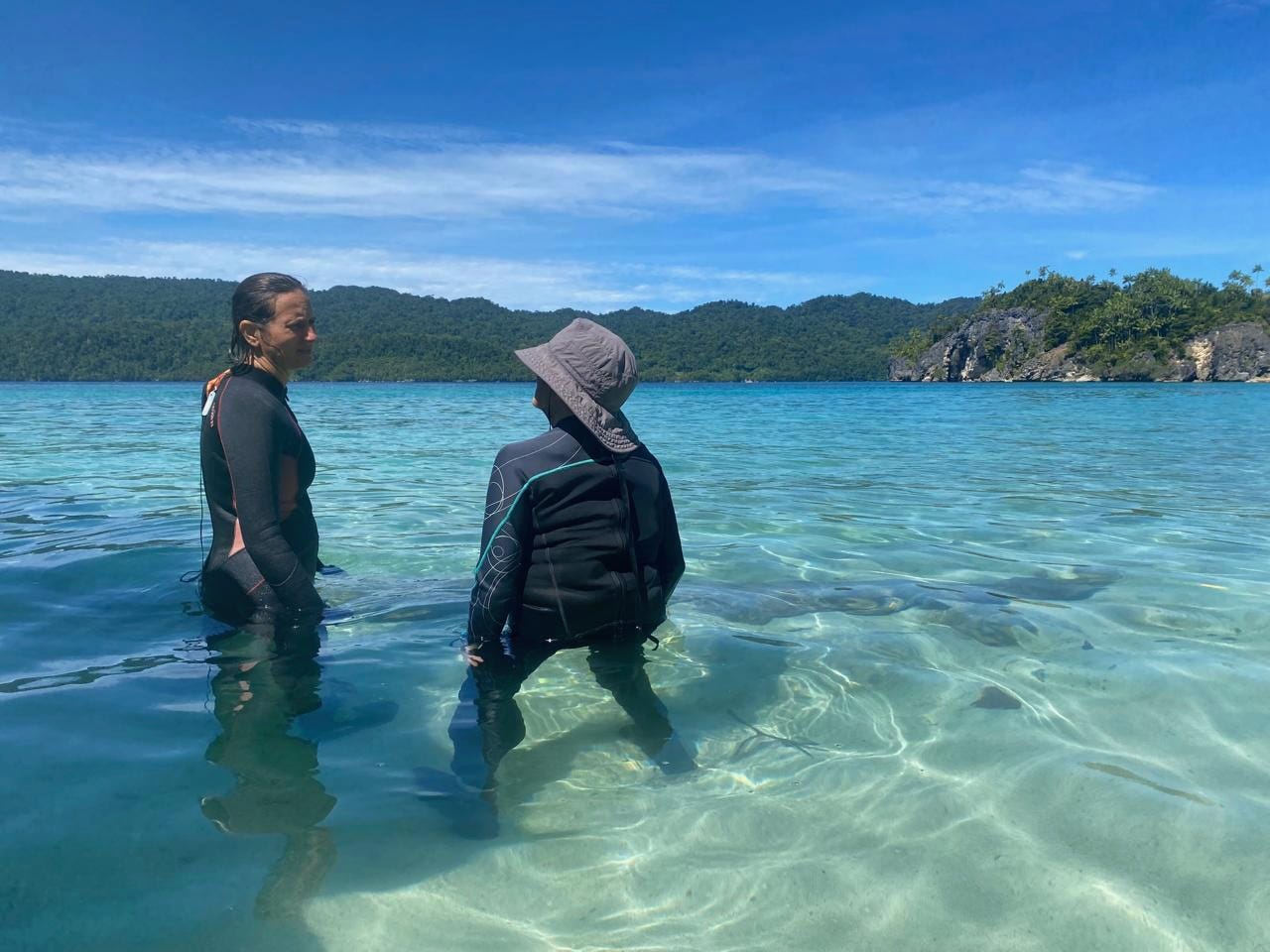
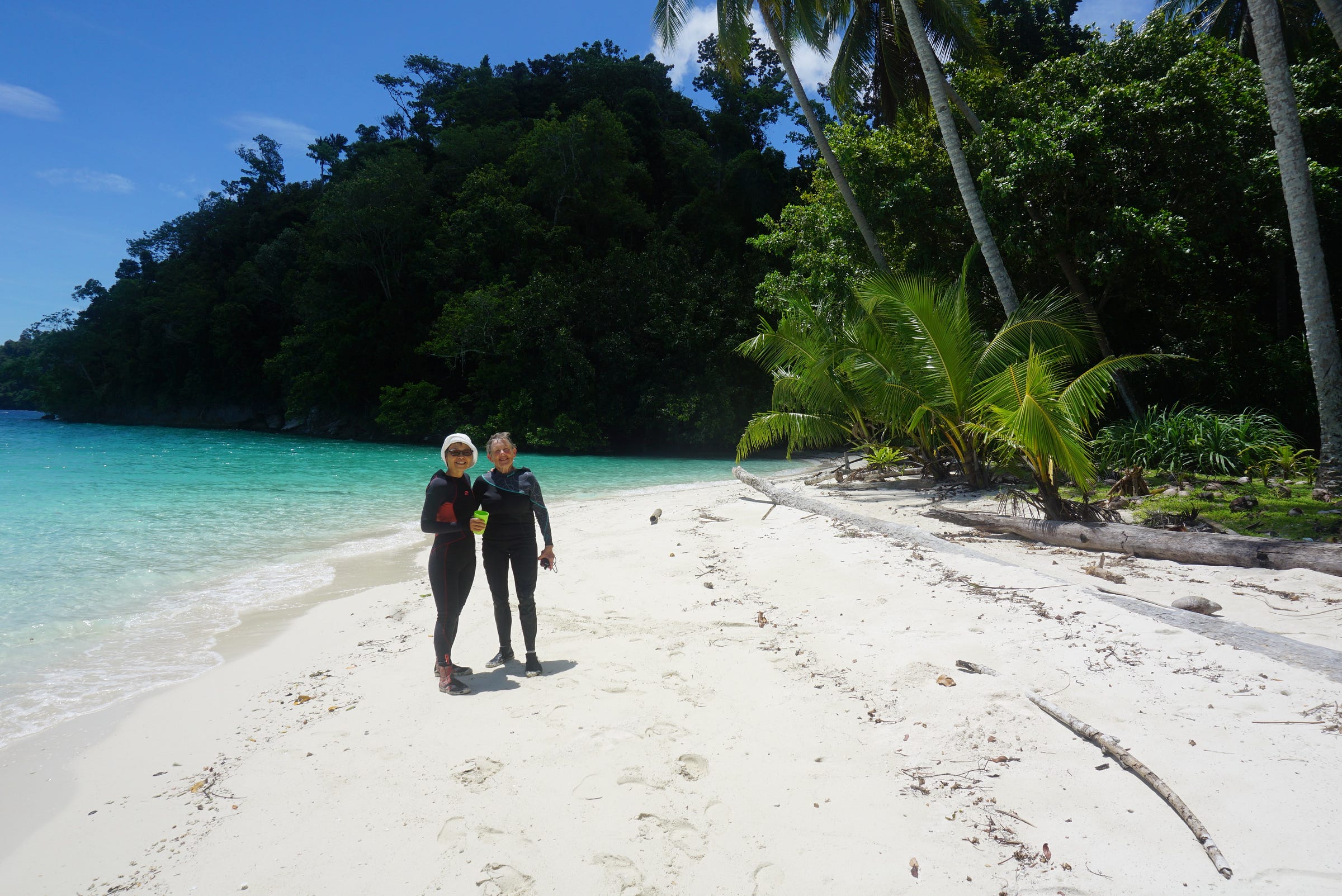
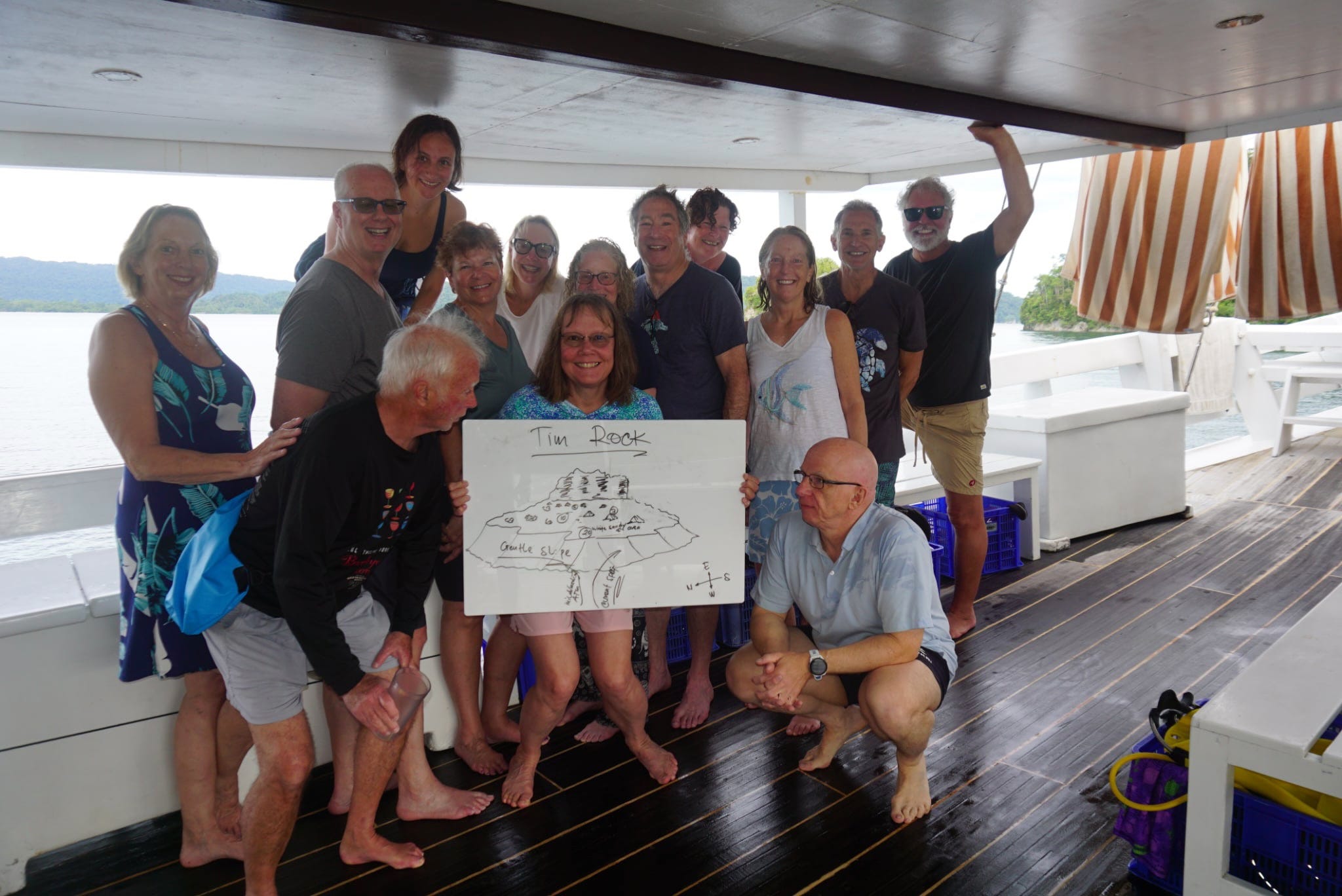
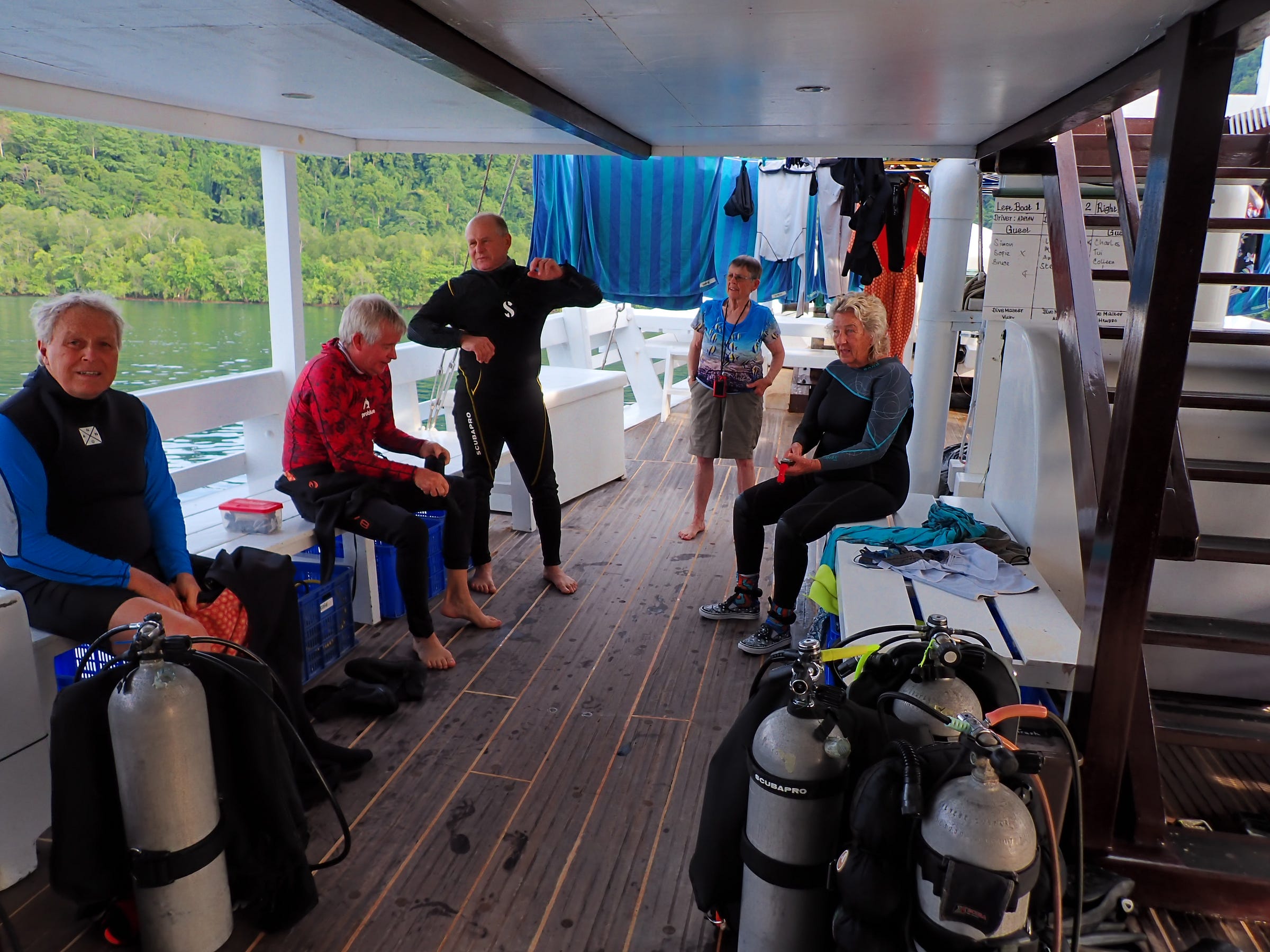

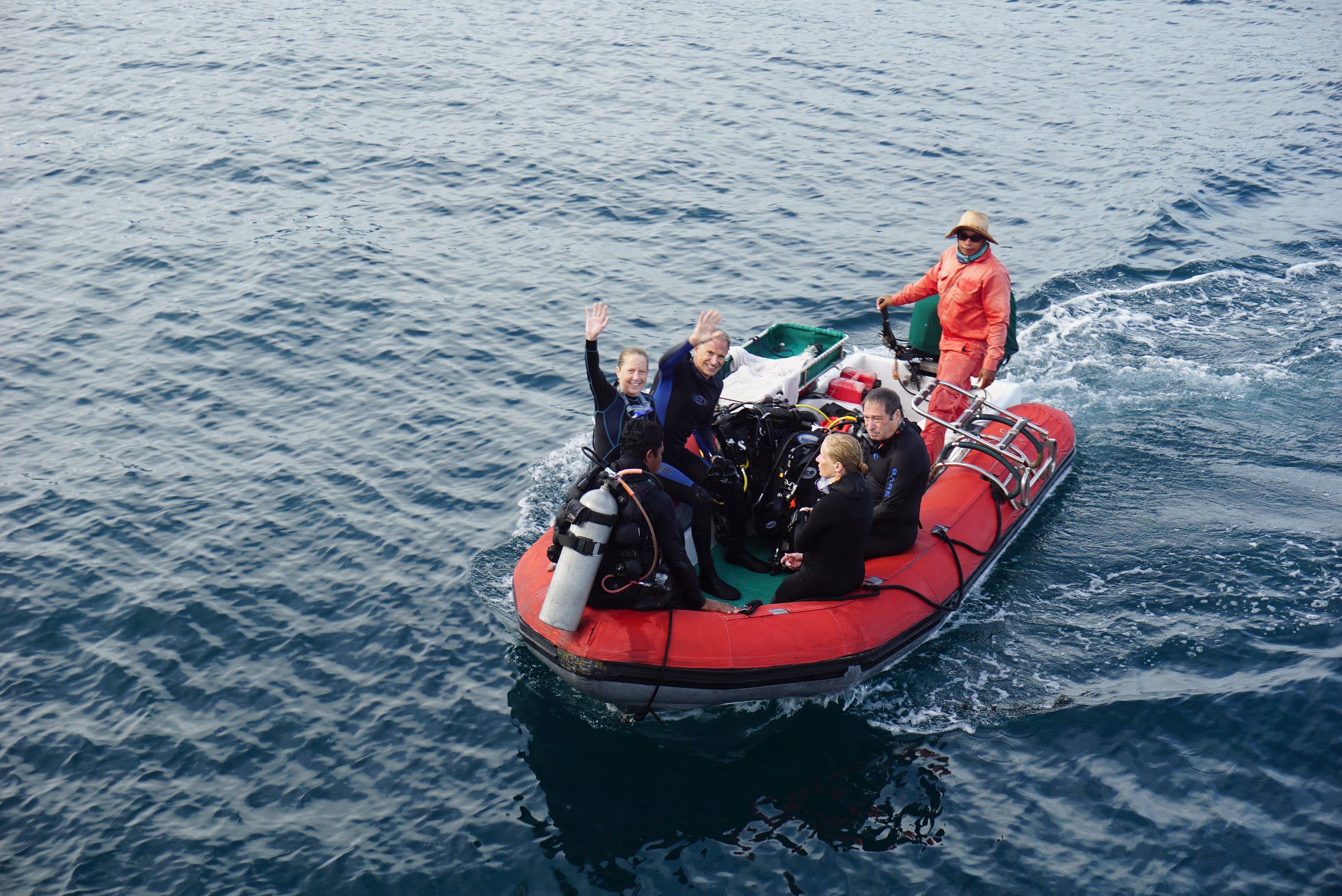
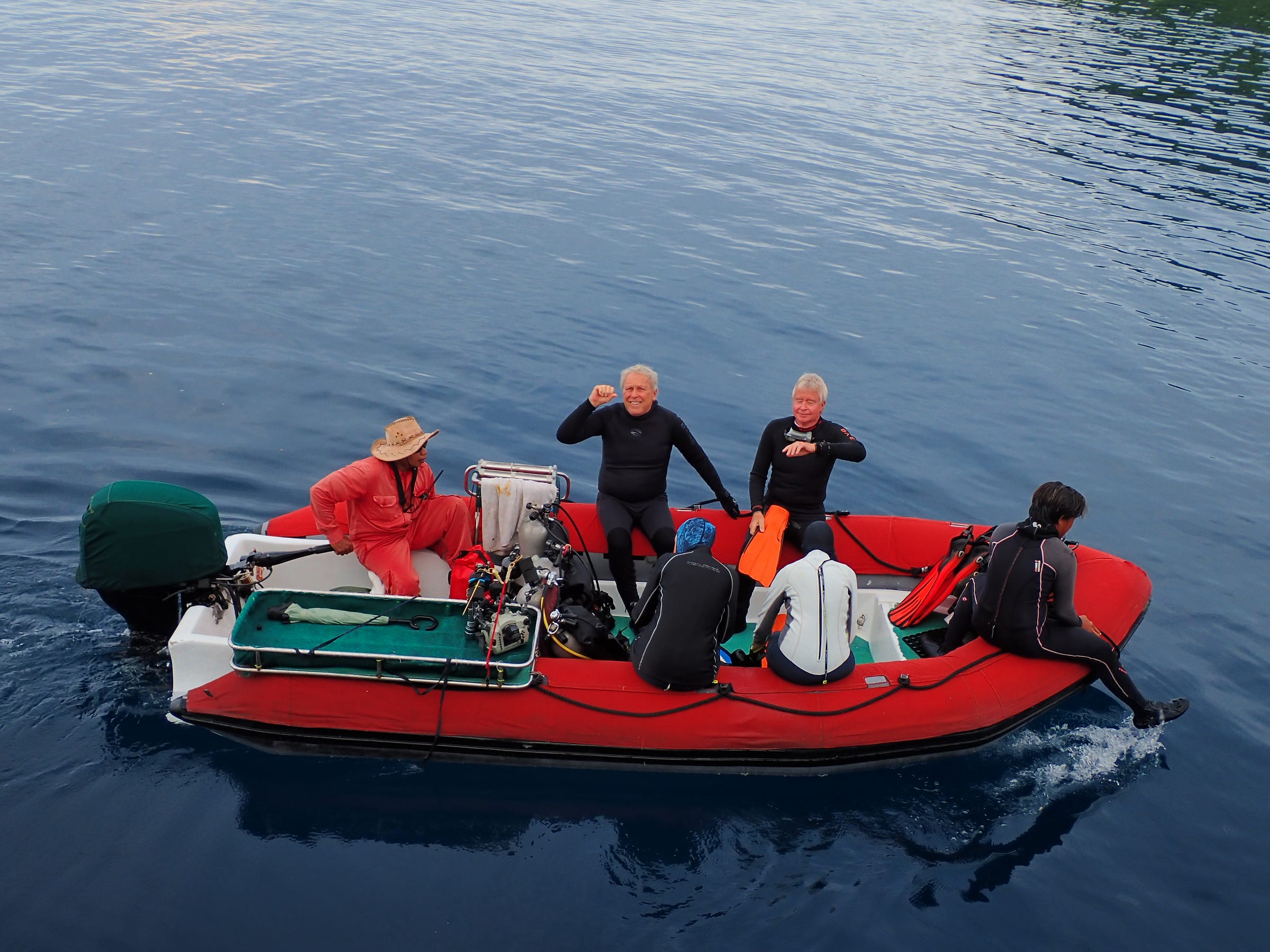
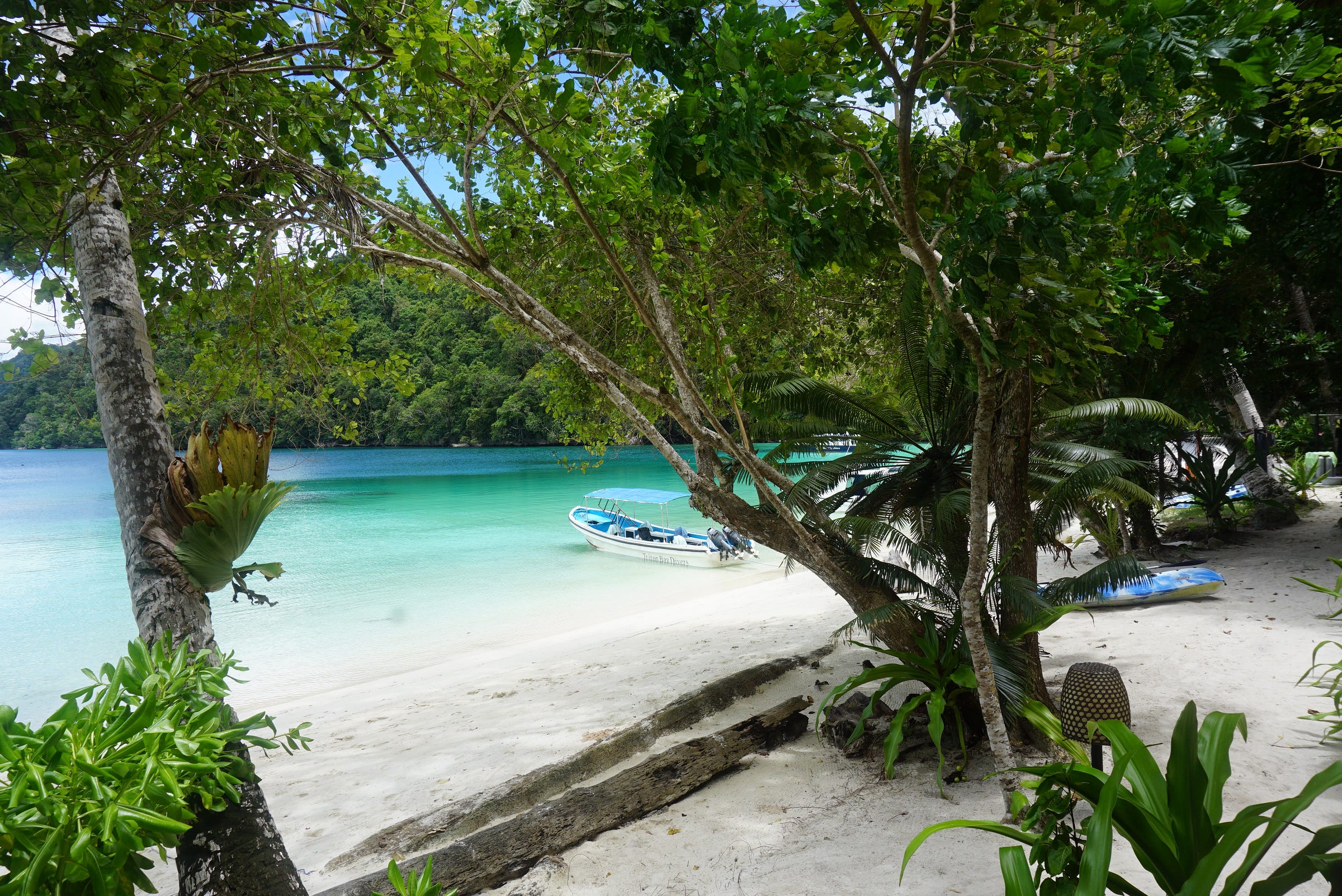


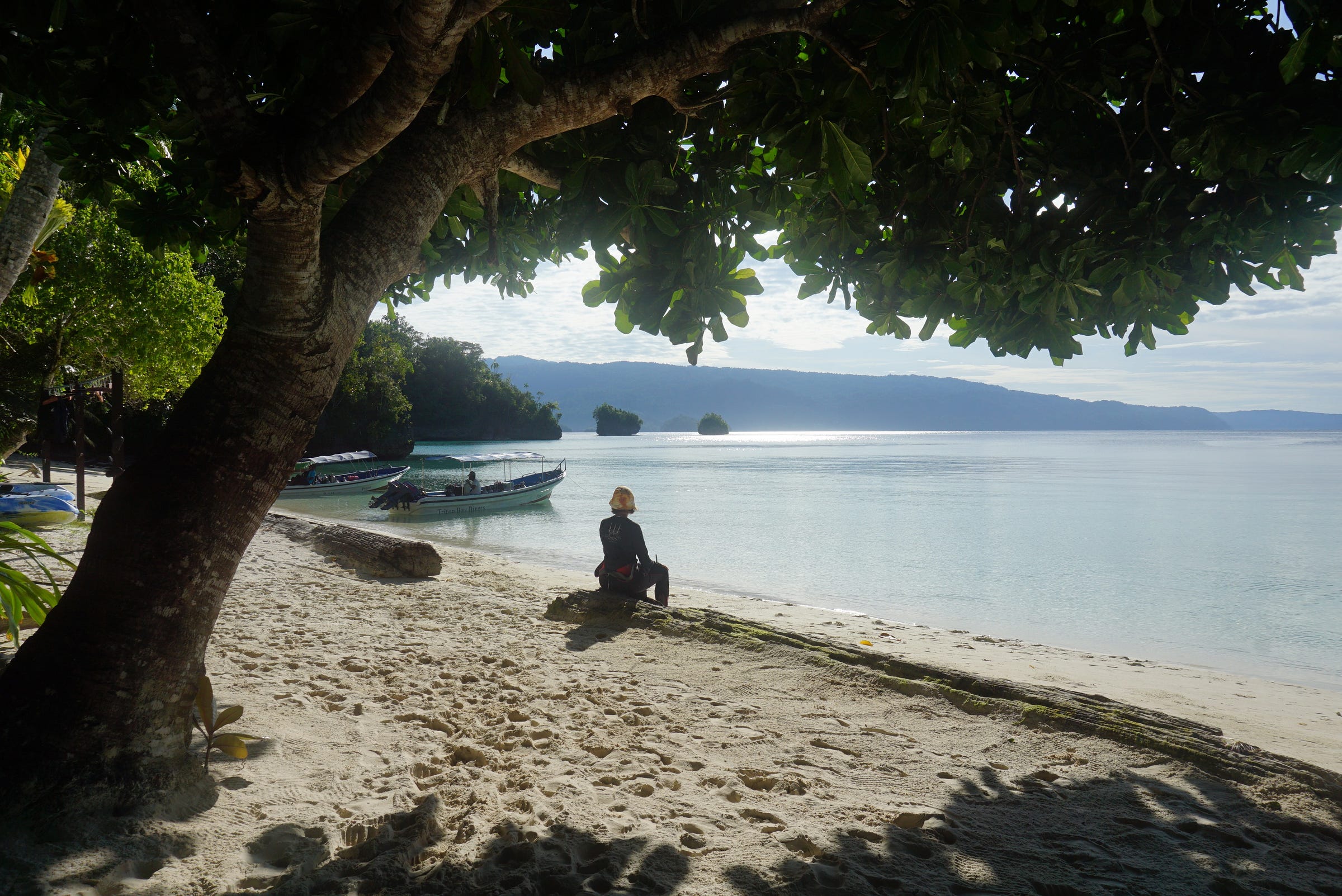
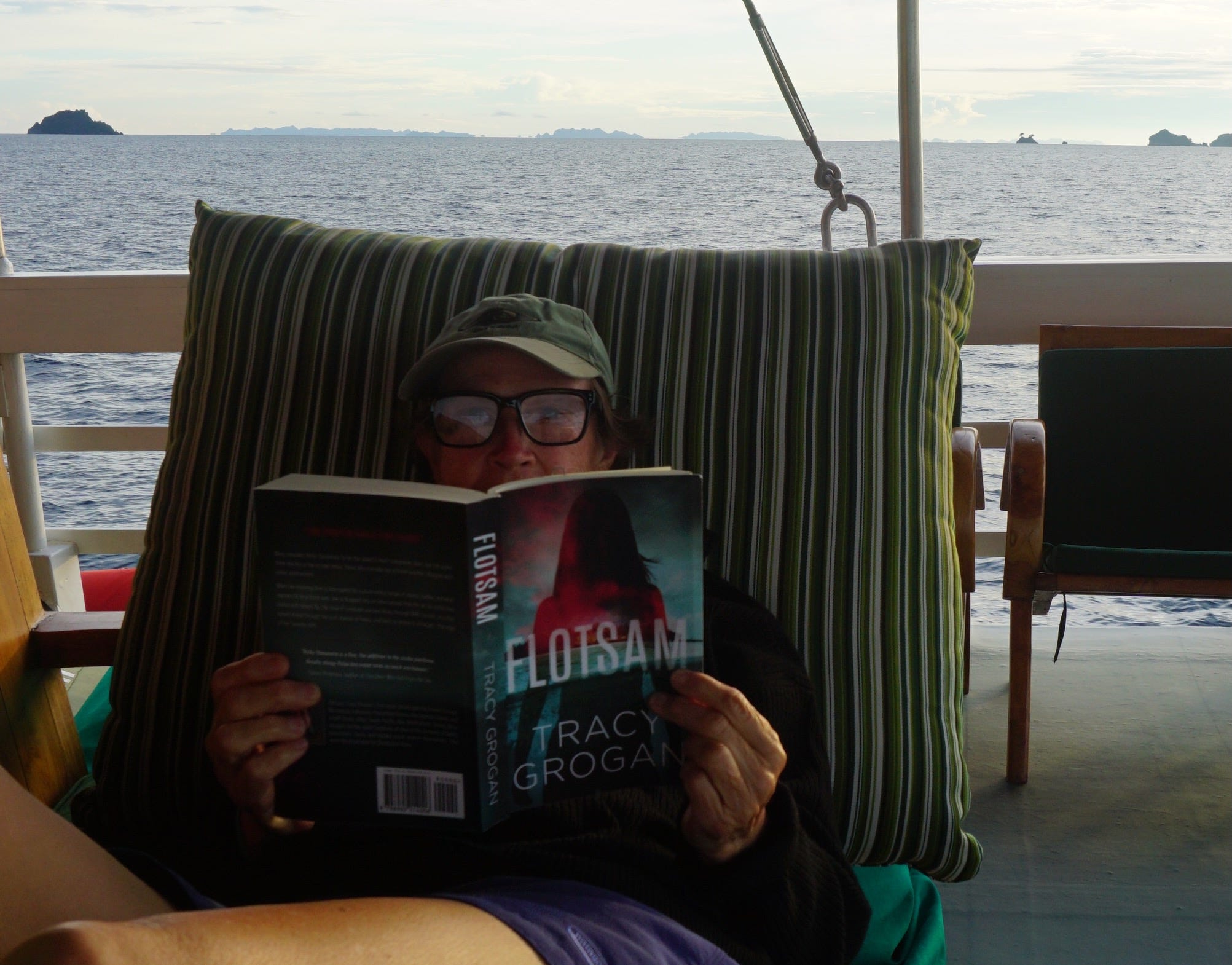
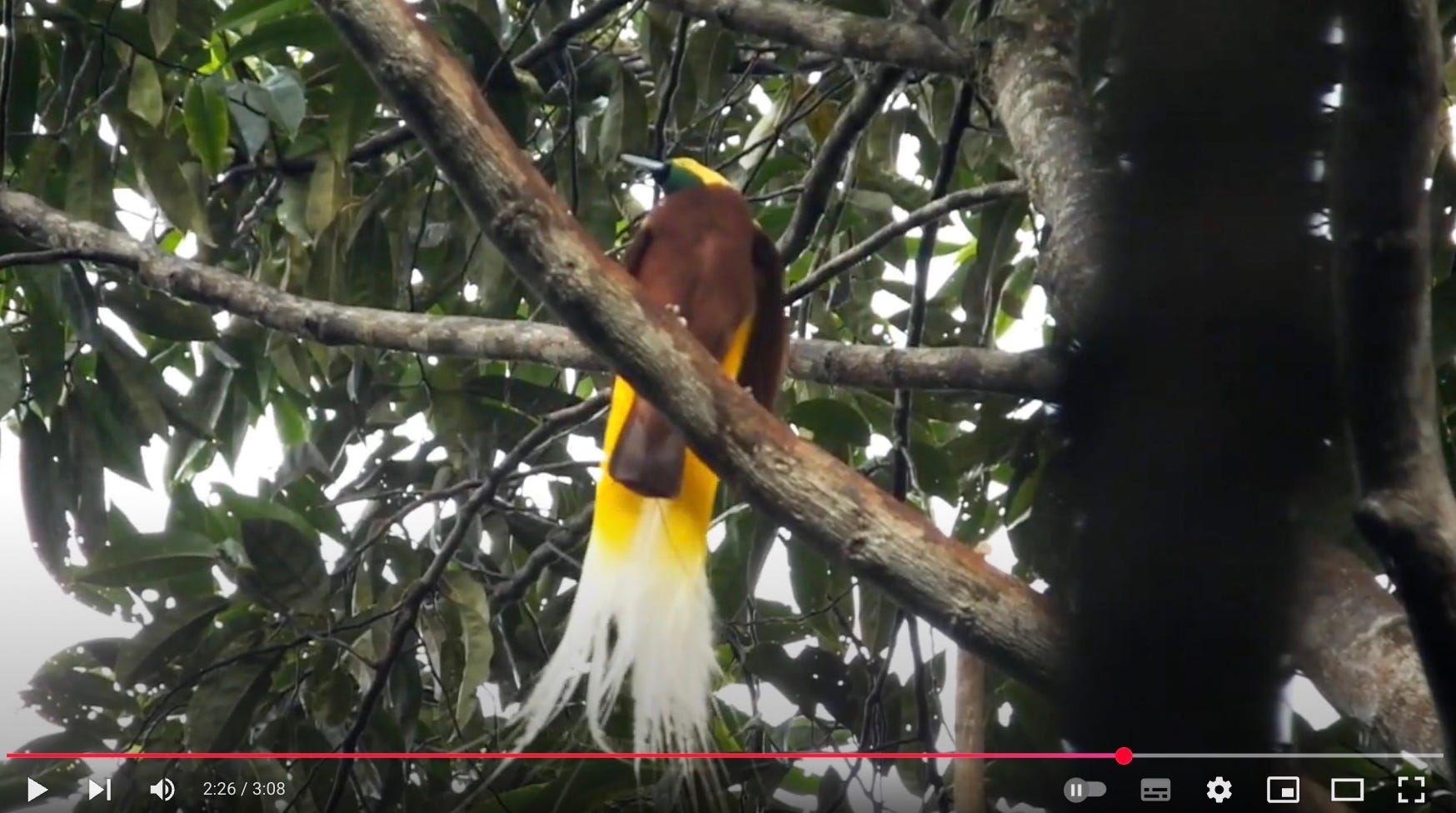

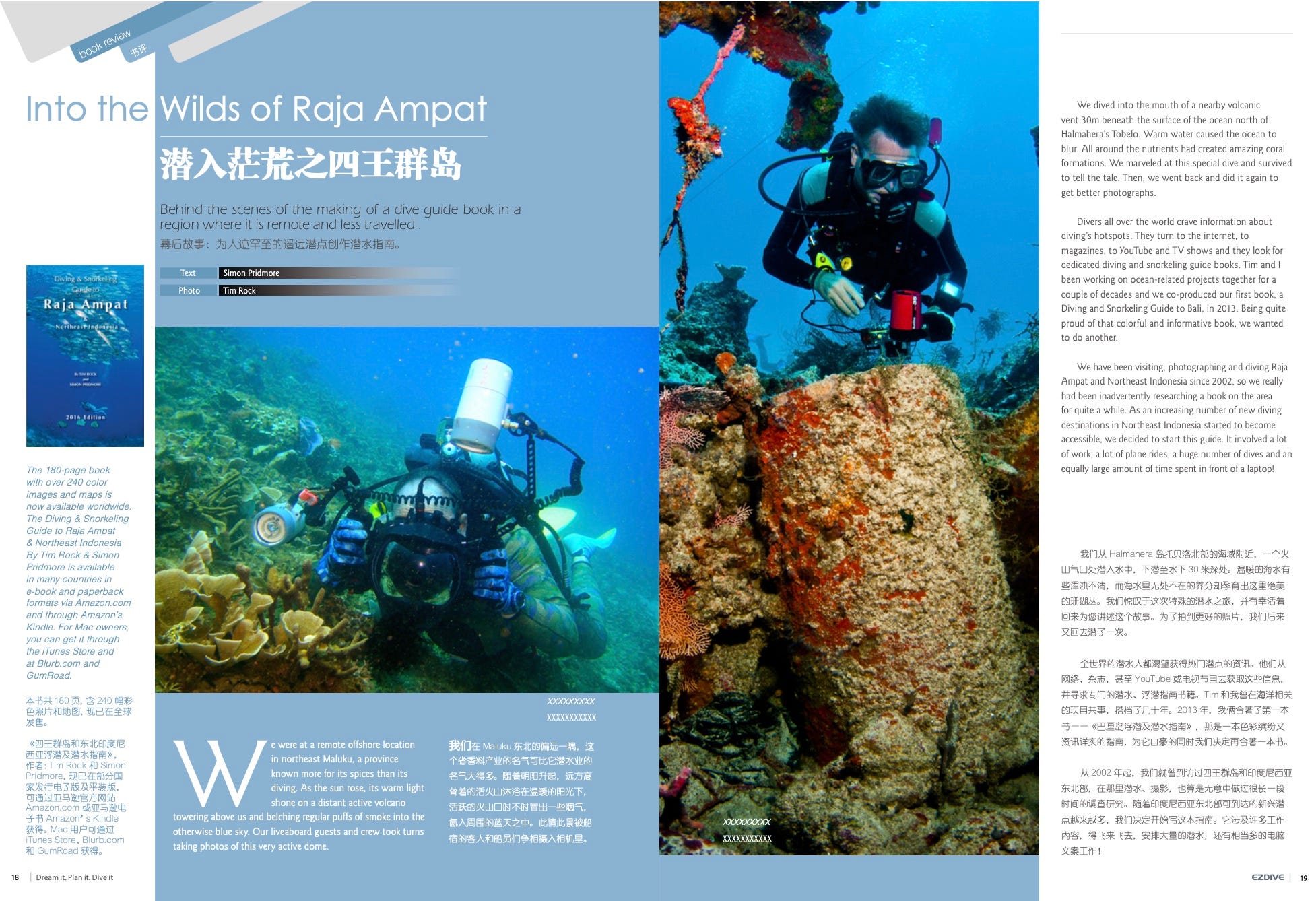
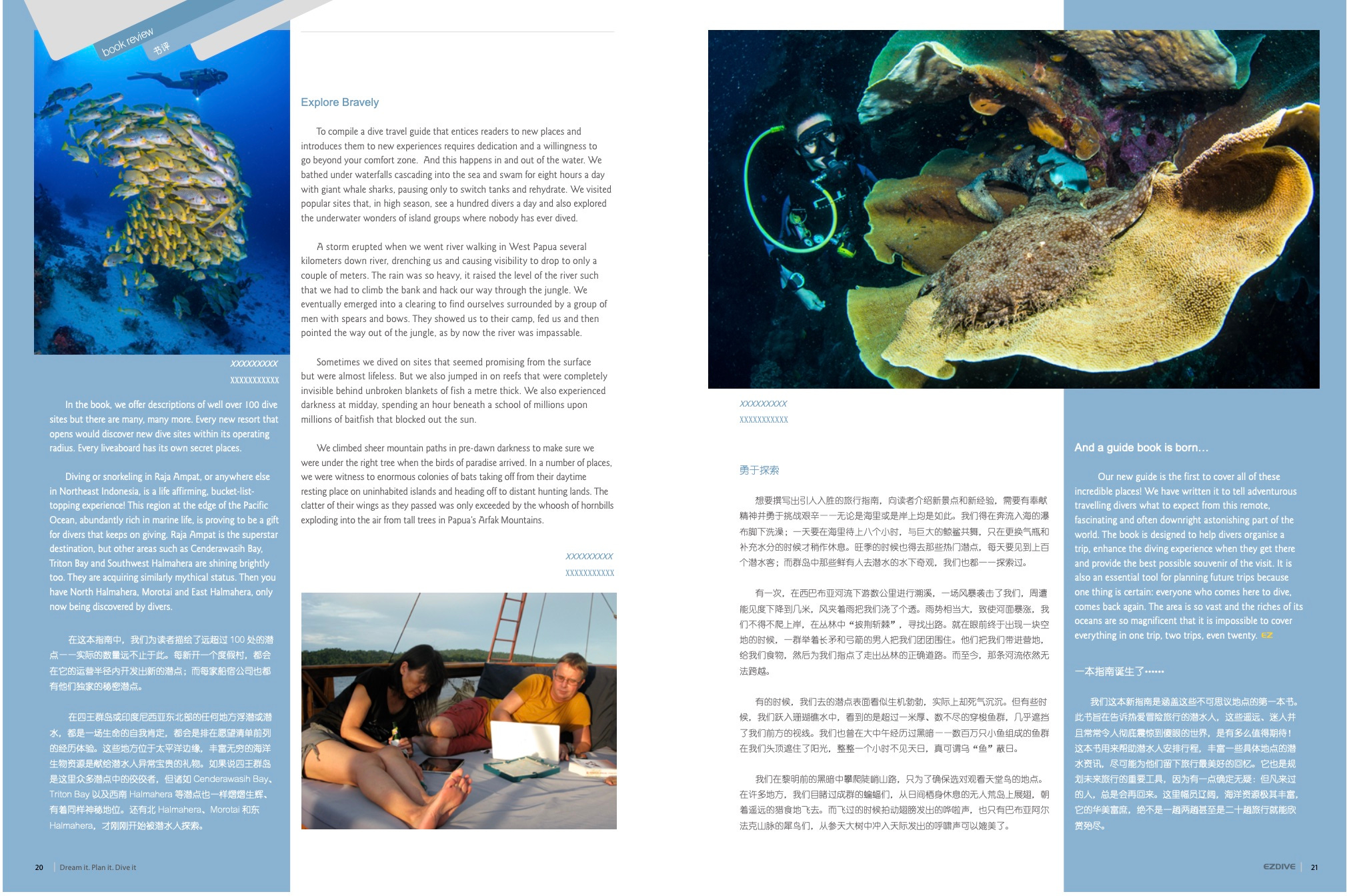
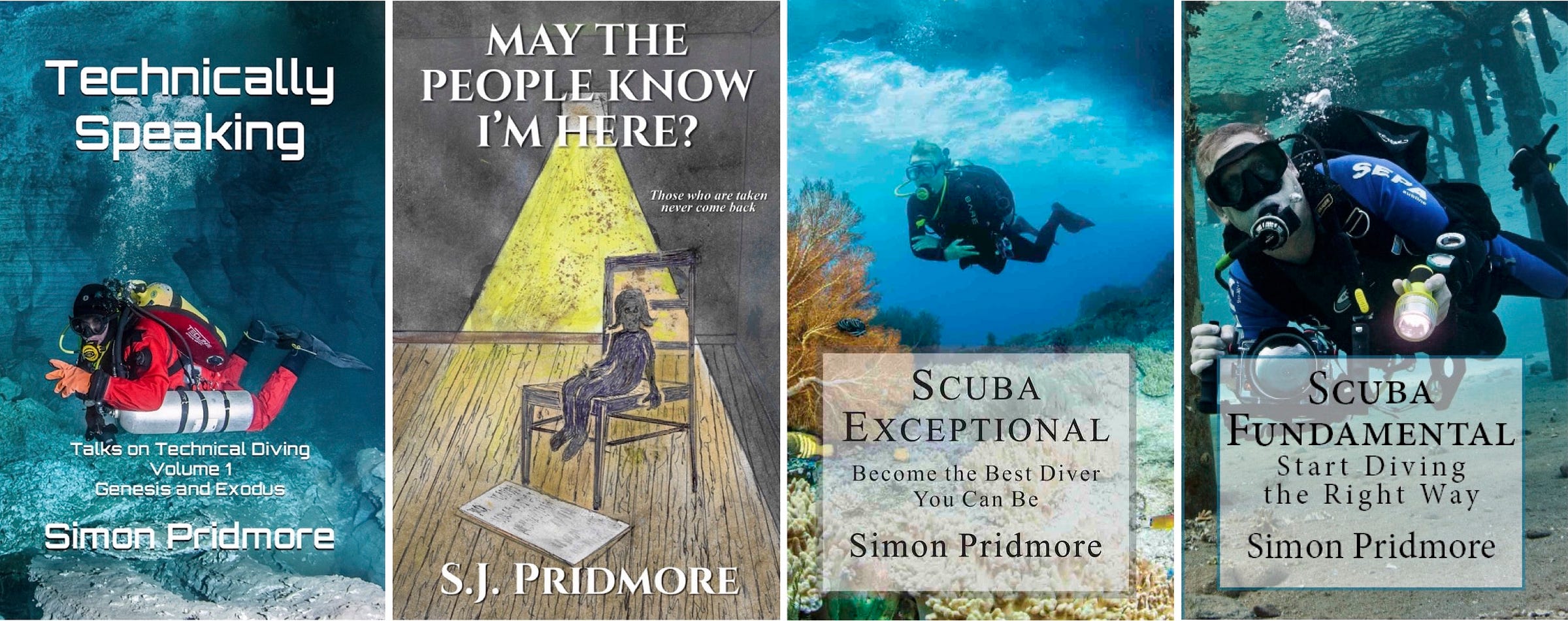
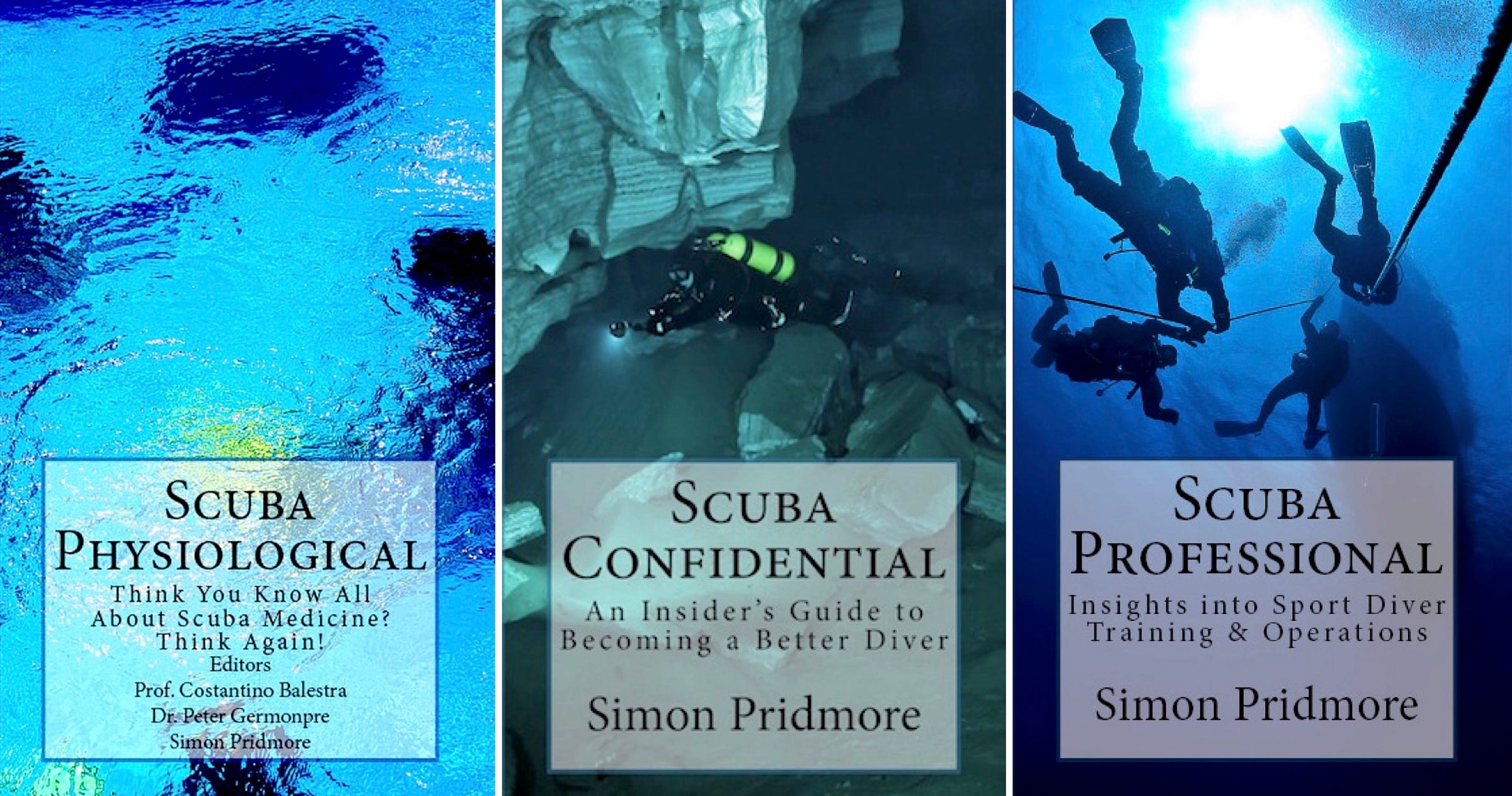
I found #69 issue quite enchanting. Probably one of the best. Sofie's little gudged performed great.
Thank you for sharing.
( My name is popping out as Ahmet?!)
Lovely to buy computer every 999. I rather have my log books!